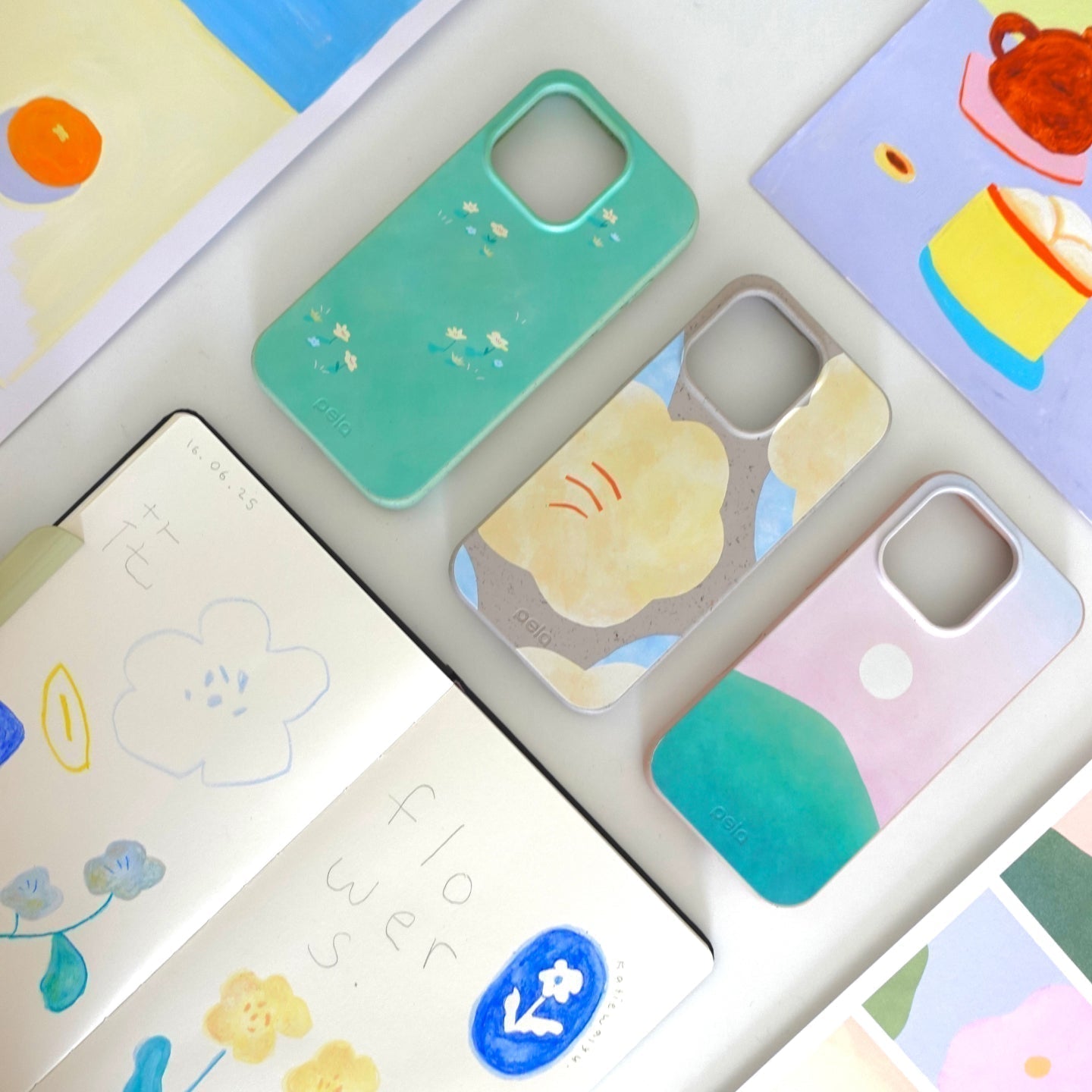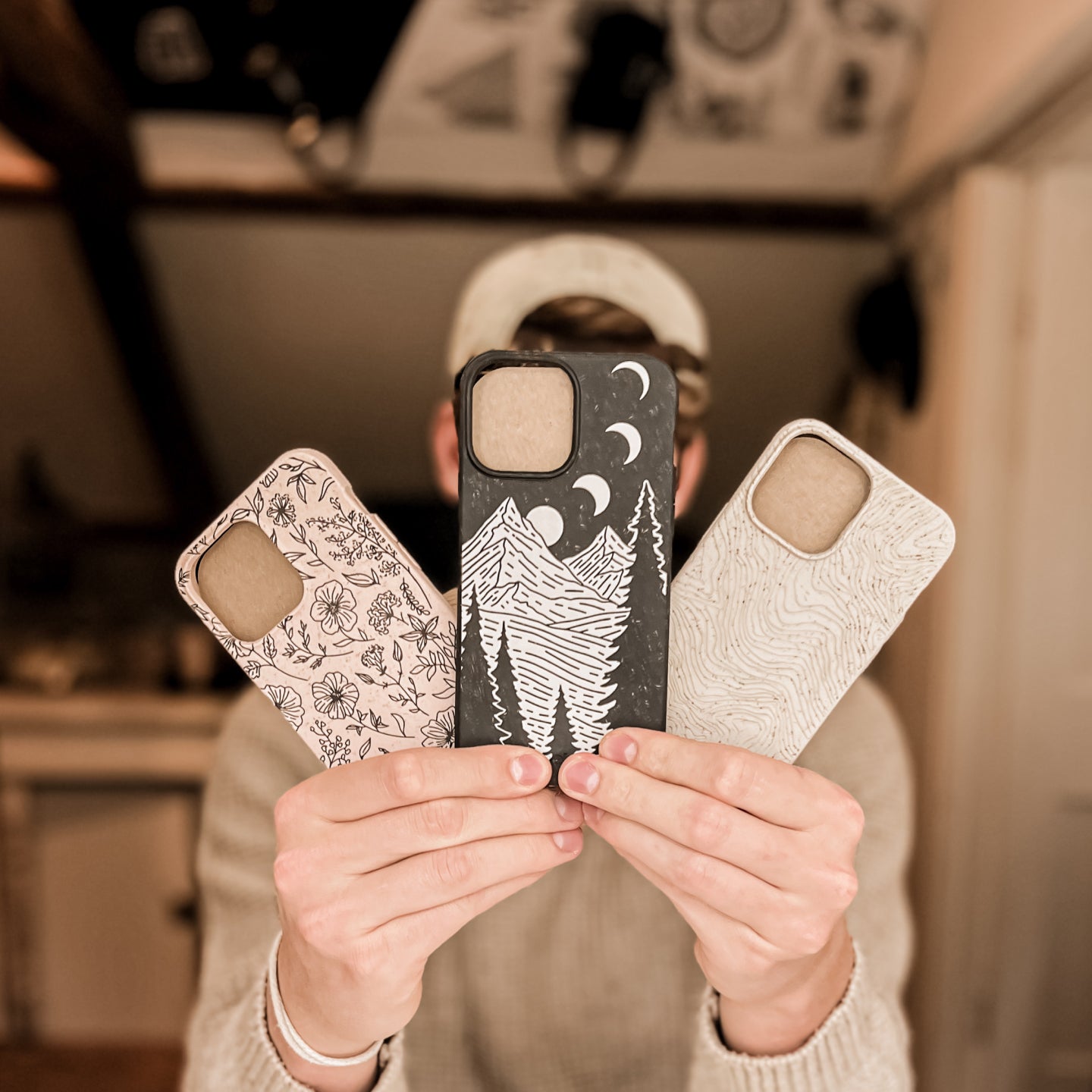
In honor of National Indigenous Peoples Day, we have collaborated with French-First Nations artist Alanah Astehtsi Otsistohkwa Jewell, also known as Morning Star. Alanah discussed with us the intersectionality of being an Indigenous Artist and a caretaker of our world.
On May 5th, 2021 Alanah’s illustration for the National Day of Awareness for Missing and Murdered Indigenous Women, Girls, and 2Spirit people went viral on Instagram. Since then more awareness has been brought to the attention of the world about the oppression and exploitation of the Indigenous Peoples of Canada. Pela respectfully acknowledges that we live, work, volunteer, learn and play on the traditional, ancestral, and unceded territory of the Syilx Nation, the first peoples of this land. We are honored to have Alanah speak with us and share her art for National Indigenous Day.
- Tell us about yourself- who are you?
I am a mixed French and First Nations youth, artist, and community organizer. I am Bear Clan from Oneida Nation of the Thames, and I currently live and work in the beautiful city of Kitchener. My middle name is Astehtsi Otsistohkwa, meaning Morningstar, and I was gifted this name when I was born.
2. What does being Indigenous mean to you?
Being Indigenous is a life-long path I will always walk, and it’s filled with so many things. These things include peace, isolation, creativity, discovery, resentment, happiness, guilt, comfort, and exploration.
Being Indigenous is reconnecting to my culture by attending Indigenous events in my city, but feeling like an outcast in my own nation’s lodge. It’s being given a voice in certain spaces, but silenced in others.
It’s carrying trauma from my ancestors, but unable to step away from the pain. It’s taking the good with the bad, and trying my very best every day to centre my teachings, and think 7 seven generations ahead. What I do today is not for myself: it’s for others. It’s to better define Indigenous identity and what we are capable of, so that generations after me can enjoy their lives peacefully.
My Indigenous identity is expressed through both my art and community organizing. I love to bring my Indigenous kin together to celebrate our histories and cultures, and to create a space for healing.
3. Can you tell us about how/why you started creating art?
I was planning a trip to Scotland – my first flight overseas – and I was horrified by the long flight. It was near the end of my third year of university, so I decided to treat myself with an iPad and pencil to help distract myself and pick up an old, familiar hobby. I started with doodling, and then quickly discovered the beautiful world of Indigenous digital art and felt very motivated to begin creating this way. Over the next year and a half, I created illustrations here and there (especially when I was relaxing at home after university exams!) but didn’t pursue art seriously until mid-2019. Drawing has always been a relaxing escape for me.
4. What inspires your art?
I am very inspired by other Indigenous people, including Indigenous artists. Reading stories about Indigenous youth, about acts of reclamation and activism, and current Indigenous initiatives is so beautiful. It gives me so much hope for my generation and for the future.
Seeing Indigenous people in well-known magazines, singing alongside mainstream artists, creating work for well-known corporations, and making a huge change in colonial spaces is incredible. It’s even more incredible to see us preserving our traditional ways of life, and flourishing through working on the land. I try and read as much as I can about Indigenous achievements to remind myself that we are collectively working through trauma, and are continuing to come out stronger.
When I read these stories, it reminds me that we each have a gift, and it’s one of my responsibilities to share that gift with others. This is where my main inspiration comes from. I am also really inspired by the natural world: I go on a long walk everyday, and regularly go for long hikes alongside rivers, in forests and through fields. I love witnessing nature’s change: buds sprouting, flowers blooming, and plants growing all inspire me to try and capture the feeling I get from witnessing this growth and change.
I hope that my art encourages people to seek out understanding on a deeper level. Whether it’s understanding history, culture, art, responsibilities, or even self, I think it’s so important for each of us to deeply understand the world around us and within us. Many of us exist so blissfully unaware of who we are and the world we are participating in everyday. So I want people to feel calm, happy and relieved when they see my work, but I hope it sparks motivation to learn and discover, whatever that looks like for each person.
Our teachings show us that we are infinitely connected to our lands, and the idea of “care taking” is at the centre of who we are.
We are told to take care of our health, the health of those around us, the health of our communities, and the health of the land. This includes mental, physical, emotional and spiritual caretaking. With this idea comes many, many teachings and an entire way of life that I’m just touching the surface on.
But adapting this philosophy – seeing every living being as important and worthy – can inspire a more intentional, careful and loving way of taking care of our world. It inspires living minimally, without the pursuit of material items; having a connection to the land and our ancestors; using our traditional medicines in a good way; only taking what we need; caring for strangers; and so much more.
This philosophy helps build bridges and mend the disconnect we have with one another, and also teach us the responsibilities we have in this life. It helps us walk our paths in a good way
7. How can those who do not identify as Indigenous be better allies?
Being a better ally means committing to a path of true allyship and getting up to speed on your own. First, this means picking up Indigenous literature, and reading Indigenous books, articles, research and work by Indigenous journalists. Many people want to be taught these things by Indigenous peoples first hand; but truthfully and respectfully, Indigenous people are not responsible for teaching these things (unless they decide to themselves, like in Indigenous college and university courses!). Secondly, being an ally means supporting Indigenous peoples in who they are and the work that they do.
Supporting us financially through purchasing our artwork, attending our concerts and shows, purchasing supplies from our businesses, driving to Indigenous communities to support our restaurants, and so on. Supporting us in other ways looks like showing up to Indigenous events and asking how you can help: this might look like carrying firewood, parking elders’ cars, and shoveling walk ways. Sharing information and following us on social media, advocating for your work to be inclusive of Indigenous peoples, and teaching your children history from an Indigenous perspective are also forms of allyship. Supporting in this way helps build relationships rooted in care-taking and gives Indigenous peoples the stage. Overall, true allyship is showing up for Indigenous peoples as educated, helpful, and supportive, for the betterment of Indigenous peoples and communities, not yourself.
 Follow Alanah on Instagram @morning.star.designs and shop more of her work online at https://morningstardesigns.ca/.
Follow Alanah on Instagram @morning.star.designs and shop more of her work online at https://morningstardesigns.ca/.



